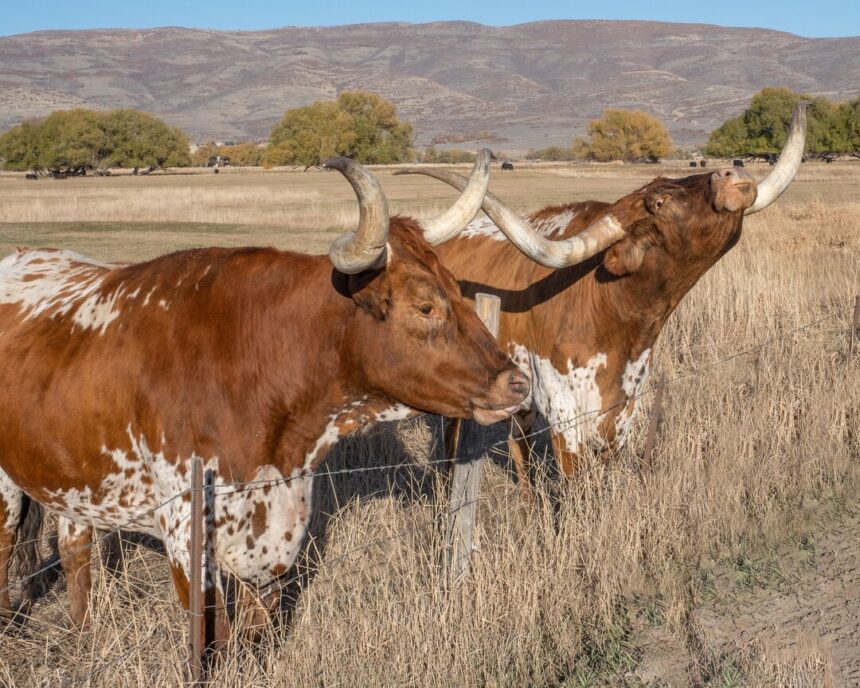Pustertaler cattle, also known as Pustertaler Sprinzen in their native Italy, are a unique and relatively rare breed known for their distinctive appearance, excellent milk production, and adaptability to various environmental conditions. While not as widely known as some other cattle breeds, Pustertaler cattle offer numerous advantages for breeders and farmers in South Africa. Whether you’re considering raising Pustertaler cattle for the first time or are already involved in breeding and farming this breed, understanding their characteristics and requirements is essential. In this article, we’ll explore 10 key things you should know about breeding and farming Pustertaler cattle in South Africa.
1. Origin and History
Pustertaler cattle originated in the Pustertal Valley of South Tyrol, Italy, where they have been bred for centuries for their milk production capabilities and adaptability to mountainous terrain. They were later introduced to South Africa, where they have gained recognition for their superior milk quality and efficiency in converting feed into milk.
2. Dual-Purpose Breed
Pustertaler cattle are considered a dual-purpose breed, meaning they are suitable for both milk and meat production. While they are primarily valued for their high milk yields and excellent milk quality, they also produce flavorful and tender beef, making them a versatile option for farmers.
3. Distinctive Appearance
One of the most striking features of Pustertaler cattle is their distinctive appearance, characterized by their sleek, dun-colored coats and distinctive white markings on their faces and legs. These markings, known as “Sprinzen,” are a defining trait of the breed and contribute to their unique and eye-catching appearance.
4. Milk Production
Pustertaler cattle are renowned for their high milk production capabilities, with cows typically producing large volumes of milk with high butterfat and protein content. Their milk is prized for its rich flavor and excellent cheese-making qualities, making it highly sought after by dairy processors.
5. Adaptability to Climate
Pustertaler cattle are well-adapted to various environmental conditions, including hot summers and cold winters. They thrive in mountainous terrain and are able to graze on steep slopes and rough pastures, making them well-suited to the diverse landscapes found in South Africa.
6. Grazing Behavior
Pustertaler cattle are excellent grazers and thrive on a diet of fresh grass and forage. They have a docile temperament and are well-behaved in the pasture, making them easy to manage and handle for farmers of all experience levels.
7. Calving Ease
Pustertaler cows are known for their ease of calving, with relatively small birth weights and few calving difficulties. This trait is highly valued by breeders and farmers, as it reduces the need for assistance during calving and minimizes the risk of health issues for both cows and calves.
8. Genetic Preservation
In South Africa, efforts are underway to preserve and promote the genetic diversity of Pustertaler cattle through selective breeding programs and conservation efforts. Breeders are working to maintain the breed’s unique characteristics and improve its overall performance and adaptability to local conditions.
9. Market Demand
While Pustertaler cattle are relatively rare in South Africa compared to some other breeds, there is growing interest in the breed among dairy farmers and enthusiasts. The high milk yields, excellent milk quality, and dual-purpose capabilities of Pustertaler cattle make them an attractive option for farmers looking to diversify their herds and improve productivity.
10. Conservation Status
Despite their many desirable traits, Pustertaler cattle are considered a rare breed in South Africa and globally. Efforts are underway to conserve and promote the breed, including establishing breed registries, supporting breeding programs, and raising awareness about the breed’s unique qualities and potential contributions to the agricultural industry.
Breeding and farming Pustertaler cattle in South Africa offer numerous advantages for farmers, including high milk yields, excellent milk quality, and adaptability to various environmental conditions. By understanding the unique characteristics and requirements of Pustertaler cattle, breeders and farmers can successfully raise healthy and productive herds while contributing to the conservation and preservation of this unique breed. With their distinctive appearance, superior milk production capabilities, and dual-purpose qualities, Pustertaler cattle are a valuable addition to any livestock operation in South Africa.
Join 'Farmers Mag' WhatsApp Channel
Get the latest Farming news and tips delivered straight to your WhatsApp
CLICK HERE TO JOIN






